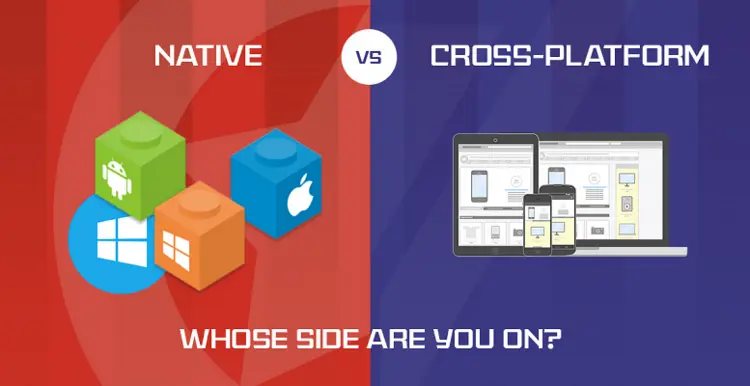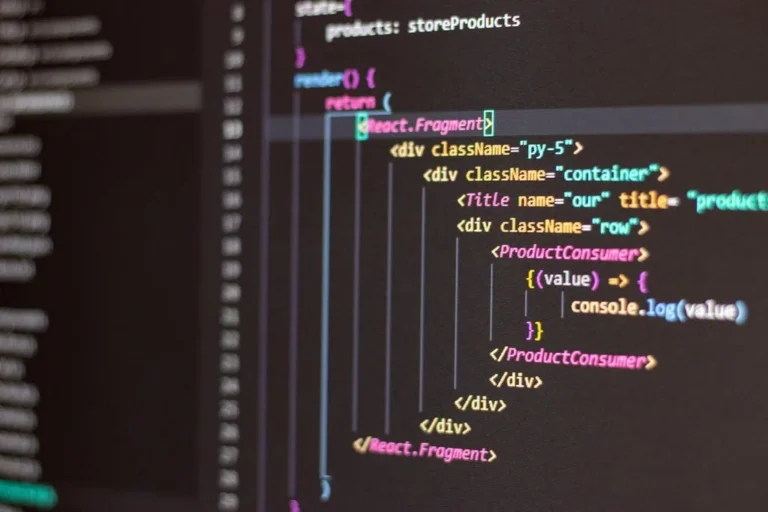10X Efficiency, Infinite Reach: Benefits of Using Flutter in Cross-Platform Development
In today’s world, technologies have been rapidly evolving and growing every single day. Consequently, a crucial element for businesses in reaching out to their target market has been the implementation of mobility solutions.
A great change in our way of doing business has taken place with the proliferation of mobile devices. For the purpose of keeping pace with competition, businesses and SMEs are looking to introduce innovative digital products. However, you should choose the most efficient way to build your product in order to make an impact on a large audience. The issue of ‘native versus cross-platform’ is the main conflict in this case. Which one is better suited to your goals?

Understanding the Need for Cross-Platform App Development
Apple is still the largest mobile vendor in the US, with a market share of 55.85%. If businesses are focused exclusively on the development of Apple’s mobile application, there is a huge audience that could not be addressed. It’s you who decides this: by designing a specific product for the different target groups, or creating one that will be applied on other platforms.

One of the underlying reasons why cross-platform products have become increasingly popular is their compatibility and cost-effectiveness. The developers are using the code multiple times. This will result in a significant reduction of the development process. As IT professionals don’t write new pieces of code, they simply run the current ones on different platforms. This attitude is known as WORA, which stands for “Write Once Run Anywhere”.
Another driving factor is the proliferation of mobile devices. Currently, there are various devices in the market, such as smartphones, tablets, and smartwatches. They all require individual native applications to run; therefore, having a single application that works across all platforms leads to better satisfaction.
Introduction: A Game-Changer for Cross-Platform Development
Flutter cross-platform digital products have become a boom in recent years. Exceptional UI and software engineering capabilities have helped to make it a popular product. We’re talking about the Google OpenSource Framework, which gives developers an opportunity to create high performance and visually attractive applications on a broad range of platforms.
The popularity of Flutter cross-platform development can be traced back to its origin when it was first introduced in May 2017 at the Google I/O conference. The Google team has continued to develop and improve Flutter mobile app development ever since.

Several major companies like Alibaba, Tencent and Google itself, have made use of this flexibility to increase their popularity and adoption of the platform. For the development of modern and innovative applications, Flutter cross-platform development has proved to be reliable and scalable.
Native Performance with Dart Language and Compiler
The main features of the Platform’s native performance are Dart language and compiler. The Dart language was built to be fast, supporting Ahead of Time (AOT) compilation, which compiles the code into native machine code before it runs. This shortens processing time, which increases speed of execution. The Dart compiler also supports Just in Time (JIT) compilation, which compiles the code on the fly during runtime, providing even faster performance.
Native performance is crucial for app development as it ensures that the solution runs smoothly without any lag or delay. That is particularly important for gaming applications which require a high degree of graphics processing and rapid refresh rates. By providing responsive UI elements, native performance improves the user experience and reduces the time it takes to load and process data.

The new platform creation has led to a new approach in the industry, where developers and companies have chosen Flutter to achieve faster delivery times and sleekness. New approaches to designing have also emerged from the benefits of Flutter app development, which allow developers to create dynamic and immersive animations and graphics that wouldn’t be possible with other frameworks.
Widget-based UI: Simplicity and Consistency Across Platforms
Widget Based UI is a concept in Flutter mobile app development that breaks the user interface up into small, reusable, and modular components known as widgets. A Widget is a basic building block representing part of the user interface. A button, a message field, a checkbox or any of the associated UI elements could be it. By combining small building blocks together to form a larger Widget hierarchy, widgets make it easy for developers to create rich and complex UIs.
The simplicity of Widget-based UI is evident in its approach to building UIs. Instead of writing complex code to define UIs, developers can simply create and combine Widgets to form the desired UI.
In addition, Widget Based UI enables developers to reuse the UI components in a variety of parts of an application or even throughout several applications. This will not only simplify the process but also decrease the amount of code needed for developing complex user interfaces in order to achieve a more efficient and sustainable application.
Rapid Prototyping and Time-to-Market Advantage
The key advantages of Flutter in cross-platform development is its ability to quickly prototype applications. The framework is supported by a hot reload that allows developers to modify application code, and they will immediately be able to see this change in the app. The capability greatly increases the speed of developing prototypes and enables faster iterations of an application.
Rapid prototyping is another benefit of Flutter app development that involves quickly building a basic version of the application and testing it with potential users. By getting feedback early on in the process, developers can identify areas where the application can be improved or simplified, and can quickly make adjustments to the design or functionality.

With today’s rapidly evolving business environment, the advantage of time to market is crucial. There is a major advantage for the companies able to supply products swiftly compared with their competitors.
Targeting iOS and Android Users with a Unified Codebase
Unlike traditional programming, Flutter features enable developers to create a single solution for both platforms that works seamlessly with each operating system, saving the amount of effort to develop two different applications.
Flutter’s ability to create a streamlined, unified codebase for both iOS and Android is particularly useful for businesses and organizations with a limited budget or time constraints. Instead of having to create two separate apps and coding them separately, developers work with just one codebase, which can be more efficient in the long run. This allows specialists to focus on refining their apps and adding features, as opposed to simply building two different versions of the same app.
Flutter app development’s unified codebase is that it can lead to faster development times. Since developers only need to write one set of code for both platforms, they can test and deploy their apps more quickly. Because of this, businesses and organizations can get their apps into the hands of users faster and with fewer bugs.
Andersen’s Success Story – From Single-Platform to Global Presence with Flutter
Andersen is a cross-platform mobile web app development company that has been on the rise since it was first established in 2007. Starting out as a single-platform company, Andersen has gradually evolved into a global presence, expanding its reach across various countries and continents. The company’s success story is a testament to its commitment to innovation, hard work, and the adoption of the latest approaches.
One of the key factors behind Andersen’s success has been its early adoption of Flutter. The main benefits of using Flutter are the platform’s ease of use, speed, and versatility as an indispensable tool for developers worldwide.

Andersen’s adoption of Flutter app development has been transformative for its business. The platform has enabled the company to achieve high-quality results faster and more efficiently than ever before. This has allowed Andersen to remain competitive in an industry that is characterized by constant change and technological evolution.
Versatility and diversity are valued by contemporary society. Sometimes it’s not possible to develop an exclusive app for every specific platform for months or even years. This step will allow you to keep pace with technological progress, save significant amounts of resources and be flexible if you choose cross-platform technologies. They have long proven to be powerful.







